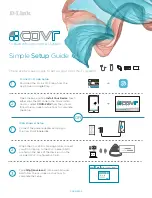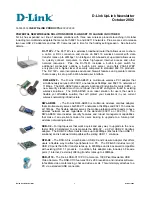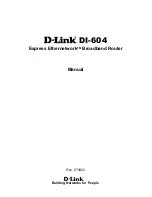
LISA-U1 series - System Integration Manual
3G.G2-HW-10002-3
Preliminary
System description
Page 30 of 125
used to set the wake-up interval during idle-mode periods between network paging, but is able to provide
programmable alarm functions by means of the internal 32.768 kHz clock.
The RTC can be supplied from an external back-up battery through the
V_BCKP
, when the main voltage supply
is not provided to the module through
VCC
. This lets the time reference (date and time) run even when the main
supply is not provided to the module. Consider that the module cannot switch on if a valid voltage is not present
on
VCC
even when the RTC is supplied through
V_BCKP
(meaning that
VCC
is mandatory to switch-on the
module).
The RTC has very low power consumption, but is highly temperature dependent. For example at 25°C and a
V_BCKP
voltage of 2.3 V the power consumption is approximately 2 µA, whereas at 70°C and an equal voltage
the power consumption increases to 5-10 µA.
The internal regulator for
V_BCKP
is optimized for low leakage current and very light loads. It is not
recommended to use
V_BCKP
to supply external loads.
If
V_BCKP
is left unconnected and the module main voltage supply is removed from
VCC
, the RTC is supplied
from the 10 µF capacitor mounted inside the module. However, this capacitor is not able to provide a long
buffering time: within few milliseconds the voltage on
V_BCKP
will go below the valid range (1 V min). At this
time the internal RTC will stop counting and the date and time setting will be lost. This has no impact on
wireless connectivity, as all the functionalities of the module do not rely on the date and time setting.
Leave
V_BCKP
unconnected if the RTC is not required when the
VCC
supply is removed. The date and
time will not be updated when
VCC
is disconnected. If
VCC
is always supplied, then the internal
regulator is supplied from the main supply and there is no need for an external component on
V_BCKP
.
If RTC is required to run for a time interval of T [s] at 25°C when
VCC
supply is removed, place a capacitor with a
nominal capacitance of C [µF] at the
V_BCKP
pin. Choose the capacitor using the following formula:
C [µF] = (Current_Consumption [µA] x T [s]) / Voltage_Drop [V] = 1.538 x T [s]
The RTC current consumption is approximately 2 µA at 25°C, and the voltage drop is equal to 1.3 V (from the
V_BCKP
typical value of 2.3 V to the valid range minimum limit of 1.0 V).
For example, a 100 µF capacitor (such as the Murata GRM43SR60J107M) can be placed at
V_BCKP
to provide a
long buffering time. This capacitor will hold
V_BCKP
voltage within its valid range for around 50 s at 25°C, after
the
VCC
supply is removed. If a very long buffering time is required, a 70 mF super-capacitor (e.g. Seiko
Instruments XH414H-IV01E) can be placed at
V_BCKP
, with a 4.7 k series resistor to hold the
V_BCKP
voltage
within its valid range for approximately 10 hours at 25°C, after the
VCC
supply is removed. The purpose of the
series resistor is to limit the capacitor charging current due to the large capacitor specifications, and also to let a
fast rise time of the voltage value at the
V_BCKP
pin after
VCC
supply has been provided. These capacitors will
allow the time reference to run during battery disconnection.
LISA-U1 series
C1
(a)
2
V_BCKP
R2
LISA-U1 series
C2
(superCap)
(b)
2
V_BCKP
D3
LISA-U1 series
2.3 V
(c)
2
V_BCKP
Figure 15: Real time clock supply (V_BCKP) application circuits : (a) using a 100 µF capacitor to let the RTC run for ~50 s at 25°C;
(b) using a 70 mF capacitor to let the RTC run for ~10 hours at 25°C when the VCC supply is removed; (c) using non-rechargeable
battery
















































